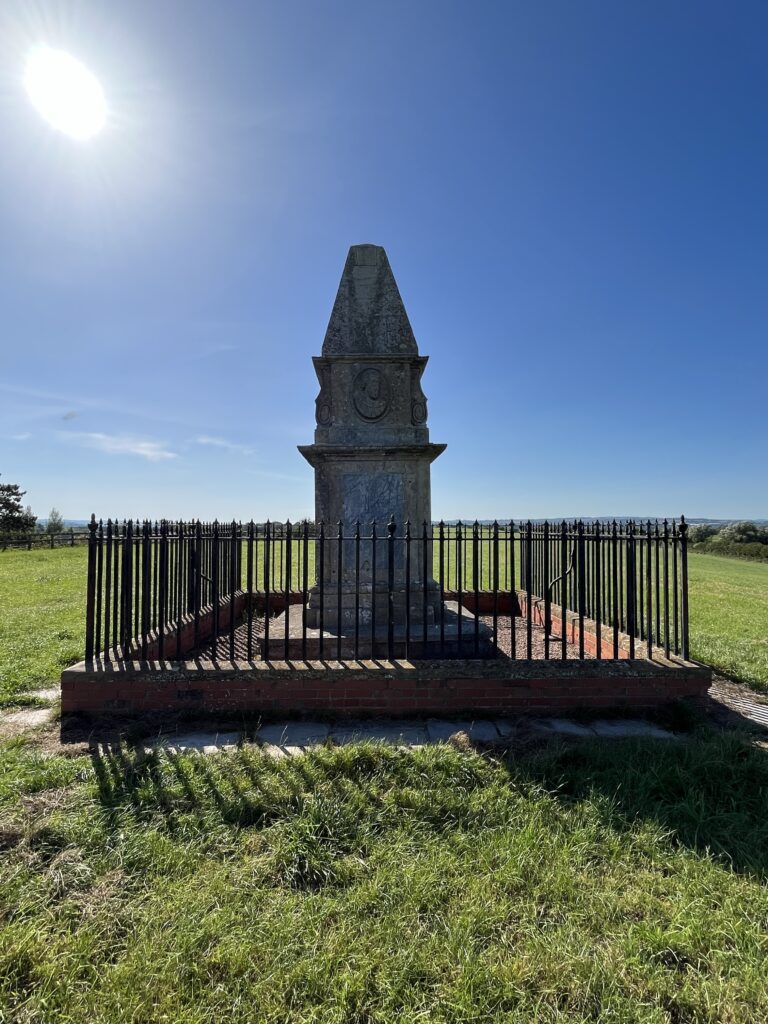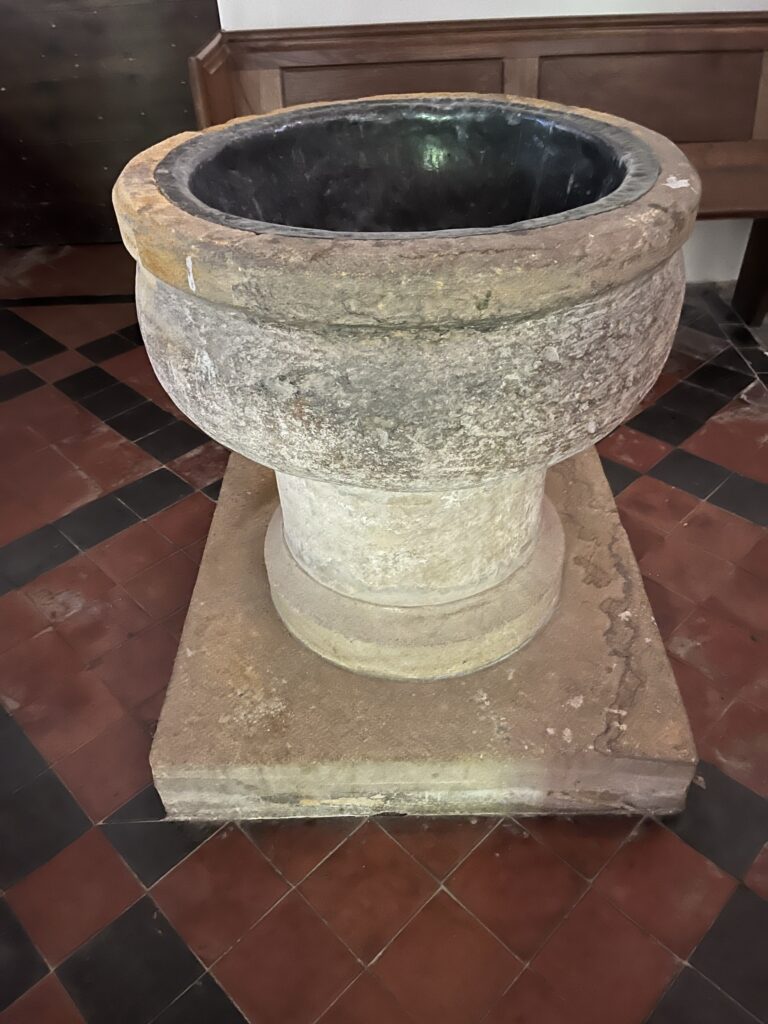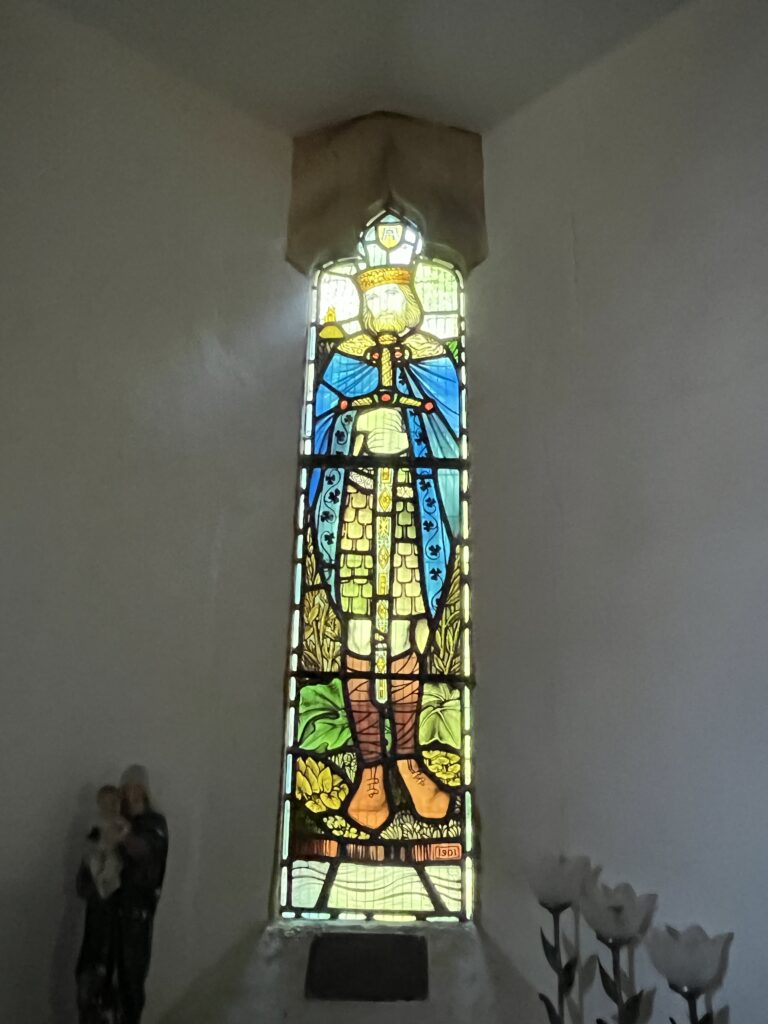
Alfred the Great (849 – 899 A.D.) is the only British monarch to attain the moniker, “the Great.” Alfred was great for many reasons, but one is that he continually sought God, humbling himself before the Lord from his youth. He was humble toward God and courageous toward men. Such a man is a useful to God.
“God opposes the proud but shows favor to the humble”
James 4:6
Our first stop today was Bath. Bath is a wonderful walking town, with many shops and places to eat. Our target destination though was beyond the shops at the bottom of the hill next to the ancient Roman Baths–Bath Abbey.
Bath Abbey yielded two finds relevant to our quest. The first was a stained glass window in the corner of the abbey dedicated to the coronation of King Edgar the Peaceful, great-grandson of Alfred the Great. Edgar was crowned here at a predecessor church on this spot in 973 A.D. That led us to a plaque in the floor where Elizabeth II had prayed to celebrate the 1,000 year anniversary of the event in 1973.
Our second stop was Athelney, a 90 minute drive south of Bath. When the country was overrun with Vikings, Alfred had his base in Athelney. From here, Alfred would go from village to village raising an army to fight the Vikings and then retreat to this geographically protected spot after battle.
Athelney became for a us a quest for a monument. No offense to the good people of Athelney, but they make the Alfred monument all but impossible to find. I finally had to ask one of the locals.
Athelney though turned out to be a favorite of the GSB team. It demonstrated the importance of reading ahead of a study tour. If we had not read the biographies of Alfred, the monument at Athelney would have meant nothing. As it was, it was like sacred ground. We stood on the spot where Alfred had spent so much time and which was so central to what the Lord did through him to unite and lead a people. It was an example of site over sights.
After Alfred defeated the Vikings and its leader, Guthrum, Alfred did not do what Vikings had done to Saxon leaders—torture and then kill them. Instead he invited Guthrum and his leaders to go through Christian discipleship and then baptized them.
“For three weeks later Guthrum, the king of the Vikings, with thirty of the best men from his army, came to King Alfred at a place called Aller, near Athelney. King Alfred raised him from the holy font of baptism, receiving him as his adoptive son . . . .”
Asser, Life of King Alfred
Alfred gave Guthrum rule over the territory east of Wessex, and even when the Vikings prepared to invade again and sought Guthrum’s alliance, Guthrum refused, then not just an ally of Alfred but a brother in Christ.

So, after leaving Athelney we drove the few miles over to Aller, the location of St. Andrew’s church and Guthrum’s baptism. Inside we found the baptismal font in which Alfred had baptized Guthrum in 878 A.D.
Then, confirming the good favor we had enjoyed all day, we found a stained glass window of Alfred toward the front of the sanctuary, just at the right time of day that the sun shone around Alfred’s head. You really can’t make this stuff up.

Alfred’s definitive battle against Guthrum and the Vikings took place near Edington in 878 A.D. It was after that battle that Guthrum and his leaders became Christians. So, next we drove to the spot were it was believed Alfred had summoned his troops before that battle. That spot is now marked with a massive tower completed in 1772 as a tribute to Alfred.
On our route back to Oxford, we rounded a bend, and to our surprise there on our left, in full view, was Stonehenge, the pagan Druid legacy of what England might have been but for a humble, Christian, courageous man named Alfred. GS
